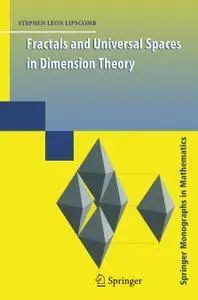Fractals and Universal Spaces in Dimension Theory By Stephen Lipscomb
English | PDF | 2009 | 259 Pages | ISBN : 0387854932 | 5.58 MB
For metric spaces the quest for universal spaces in dimension theory spanned approximately a century of mathematical research. The history breaks naturally into two periods — the classical (separable metric) and the modern (not necessarily separable metric). While the classical theory is now well documented in several books, this is the first book to unify the modern theory (1960 – 2007). Like the classical theory, the modern theory fundamentally involves the unit interval.
By the 1970s, the author of this monograph generalized Cantor’s 1883 construction (identify adjacent-endpoints in Cantor’s set) of the unit interval, obtaining — for any given weight — a one-dimensional metric space that contains rationals and irrationals as counterparts to those in the unit interval.
Following the development of fractal geometry during the 1980s, these new spaces turned out to be the first examples of attractors of infinite iterated function systems — “generalized fractals.” The use of graphics to illustrate the fractal view of these spaces is a unique feature of this monograph. In addition, this book provides historical context for related research that includes imbedding theorems, graph theory, and closed imbeddings.
This monograph will be useful to topologists, to mathematicians working in fractal geometry, and to historians of mathematics. It can also serve as a text for graduate seminars or self-study — the interested reader will find many relevant open problems that will motivate further research into these topics.



